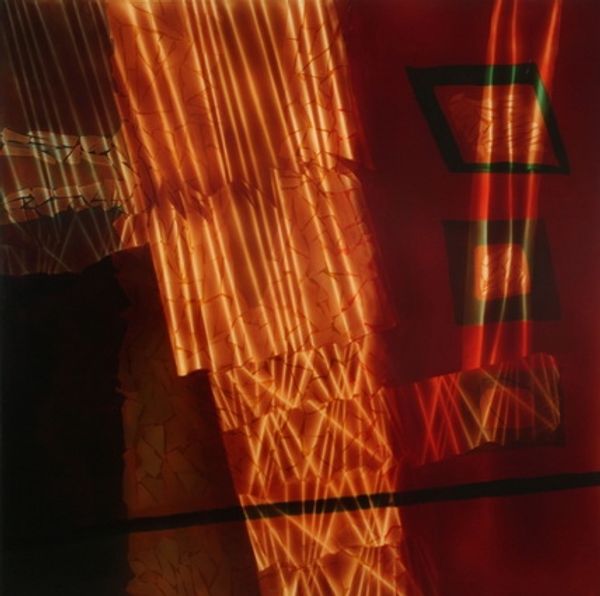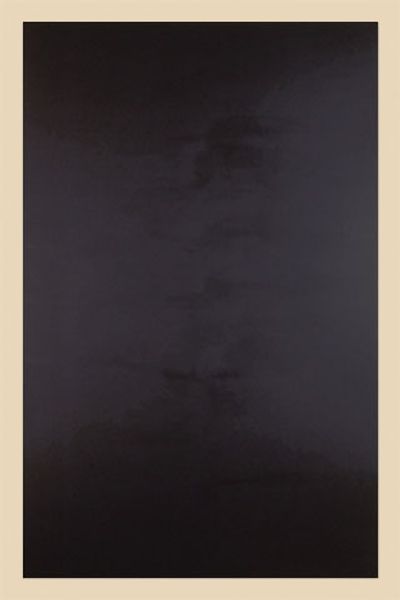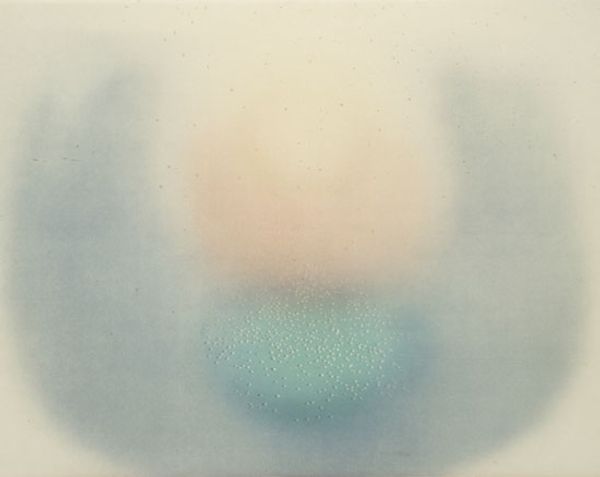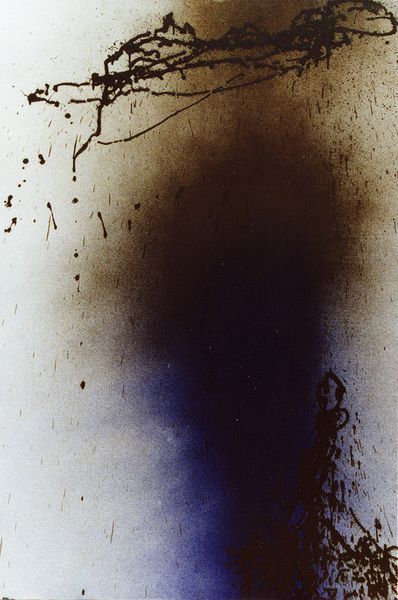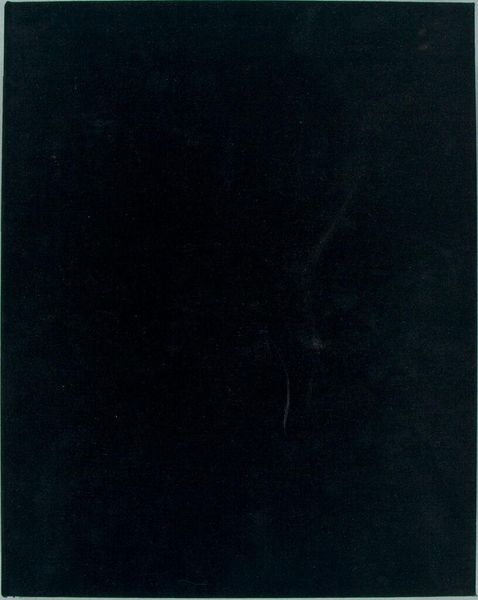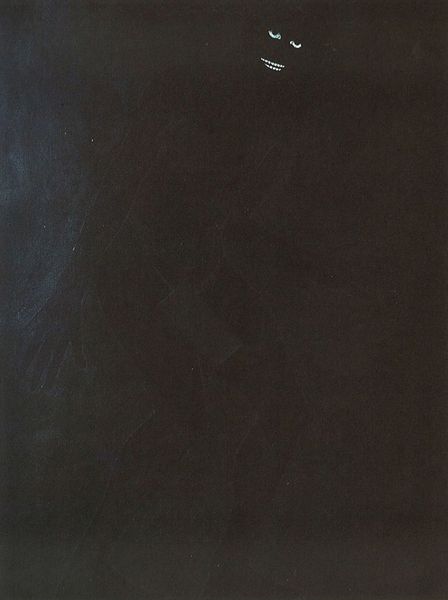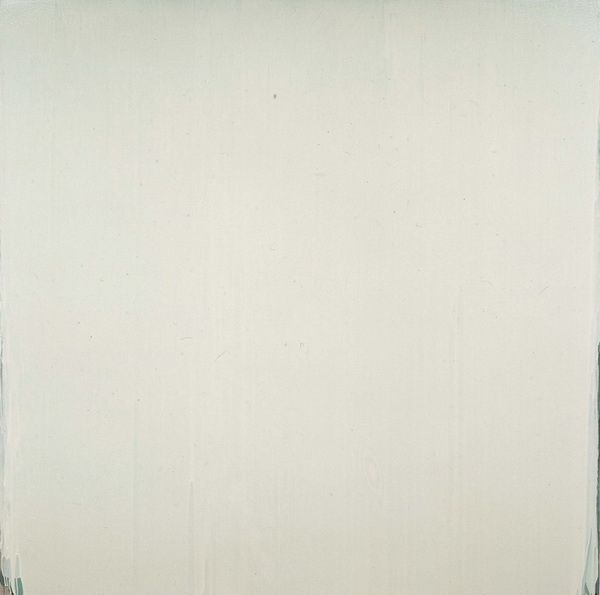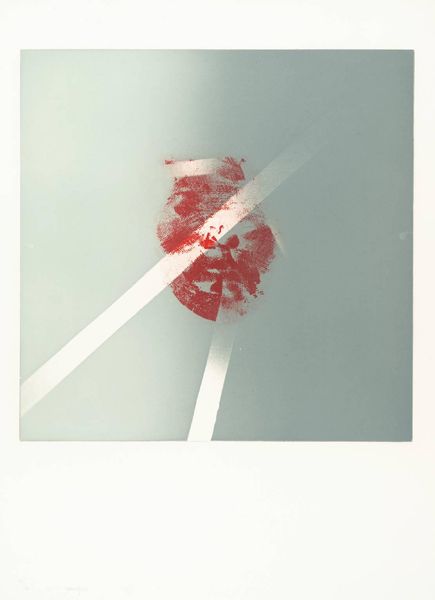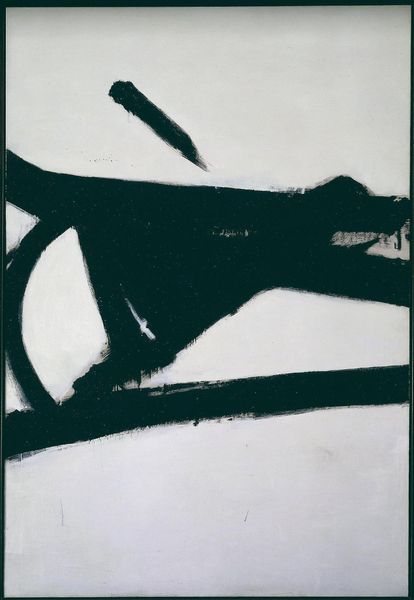
painting, oil-paint
#
abstract-expressionism
#
abstract expressionism
#
painting
#
oil-paint
#
landscape
#
abstraction
#
line
Copyright: Edward Corbett,Fair Use
Curator: Edward Corbett's "Washington D.C. 1968," an oil painting from, unsurprisingly, 1968. Editor: It feels like a Rothko trying to be a landscape. Ominous. The weight of that upper register of green… heavy. Curator: Yes, the colour field is key here. The near-monochromatic palette really flattens the representational space, but also establishes a rigorous formal structure. Note that thin orange line – a horizon. Editor: A burning horizon, perhaps? 1968 wasn’t exactly a tranquil year. Civil Rights protests, anti-war demonstrations… Washington D.C. was at the center of it all. Curator: I see what you mean. Considering the formal elements, I still think that single horizontal band, acting almost as a visual full stop, holds considerable structural weight. Editor: Absolutely, it grounds the piece in a disquieting way. It isn’t simply about the beautiful gradations of green. That line bisects an unspoken history, right? I keep thinking about the Kerner Report and its findings about systemic inequality and the racial divides. Curator: Fascinating. It introduces a level of sociopolitical commentary I hadn't fully considered within Corbett’s body of work. Though predominantly known for exploring pure abstraction, the tension speaks for itself. Editor: Art rarely exists in a vacuum, particularly something created during such a turbulent period. Maybe we shouldn't always separate the aesthetic experience from its socio-political genesis. Curator: Well, I do see its masterful balancing of shape and texture with a very limited palette now too, the colour choices become powerful metaphors for both beauty and pain. Editor: A somber dance, a reminder that art, at its best, confronts and encapsulates difficult truths.
Comments
No comments
Be the first to comment and join the conversation on the ultimate creative platform.




